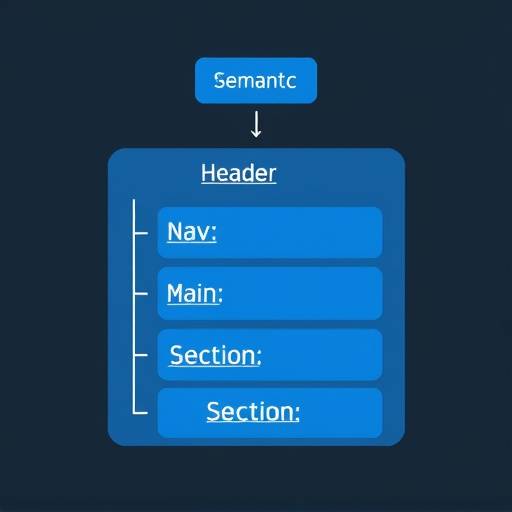Inclusive Worlds: Ensuring Access for All Gamers
At The Art of Pixels, we believe that the beauty and innovation of game visual culture should be accessible to everyone, regardless of ability. This page outlines our unwavering commitment to digital inclusivity.
Our Commitment to Accessibility
The digital realm of gaming is a rich tapestry of creativity and expression. For us at The Art of Pixels, this tapestry is only truly complete when woven with threads of inclusivity. We are dedicated to creating a website that not only showcases the stunning visual artistry of video games but also ensures that this appreciation is available to all members of our community, including individuals with disabilities. This commitment extends beyond mere compliance; it is a core value that guides our design, development, and content creation processes.
We understand that digital accessibility is an ongoing journey, not a final destination. Our goal is to meet and exceed the Web Content Accessibility Guidelines (WCAG) 2.1 Level AA, a globally recognized standard for web accessibility. This means meticulously considering a wide range of user needs, from visual and auditory impairments to motor and cognitive challenges. By integrating accessibility from the ground up, we aim to provide a seamless and enjoyable experience for every visitor, empowering them to explore, learn, and engage with the world of game visuals without barriers.
Our team, led by our Chief Accessibility Officer, Dr. Aris Thorne, a distinguished researcher in Human-Computer Interaction from the Lumina Digital Arts Collective's Neo-Veridia research division, works diligently to identify and address potential accessibility impediments. This proactive approach allows us to build a more robust, user-friendly, and ultimately, more beautiful digital space for everyone. We are constantly seeking feedback and innovative solutions to ensure that The Art of Pixels remains a beacon of inclusive digital art appreciation.
Key Accessibility Features of The Art of Pixels
We have implemented a comprehensive set of features to ensure our website is navigable and perceivable by as many users as possible. These include:
WCAG 2.1 AA Compliance
Our website has been designed and developed with the principles of WCAG 2.1 Level AA in mind. This standard provides a robust framework for ensuring web content is perceivable, operable, understandable, and robust. We strive to adhere to all success criteria within this level, which include guidelines for text alternatives for non-text content, captions and audio descriptions, adaptable content structures, and more.
Semantic HTML and ARIA Implementation
We utilize semantic HTML5 elements (e.g., `
Keyboard Navigation
All interactive elements on The Art of Pixels website are fully navigable and operable using a keyboard alone. This is crucial for users who cannot use a mouse or have motor impairments. Focus indicators are clearly visible when tabbing through interactive elements, such as links, buttons, and form fields, making it easy to understand which element is currently active. Our navigation menus, image galleries, and any form elements can be accessed and operated solely through keyboard inputs.

Clear focus indicators guide keyboard users.
ARIA attributes enhance screen reader understanding.

Semantic HTML ensures clear content hierarchy.
Screen Reader Compatibility
We have rigorously tested our website with popular screen readers such as NVDA, JAWS, and VoiceOver. This testing ensures that all content, including headings, paragraphs, links, images (via descriptive `alt` text), and interactive elements, is conveyed accurately and logically. Users can expect a coherent auditory experience that mirrors the visual structure and information presented on the page. We pay special attention to the order of content presentation and the descriptive nature of link text and button labels.
Color Contrast and Readability
Maintaining sufficient color contrast between text and background is paramount for users with low vision or color blindness. Our dark theme utilizes color palettes designed to meet WCAG AA contrast ratio requirements, ensuring text is legible. We also ensure that information is not conveyed solely through color; for example, error states in forms are indicated with icons and text messages, not just red borders.
Responsive Design
The Art of Pixels adapts seamlessly to various screen sizes and devices, from desktops to mobile phones and tablets. This responsive design ensures that all users, regardless of their preferred device or viewing method, can access and interact with our content comfortably and effectively. Layouts adjust, font sizes remain readable, and interactive elements are appropriately spaced and sized for touch or mouse interaction.
Designing for Diverse Needs
Accessibility is more than just technical implementation; it's about empathy and understanding the diverse ways people interact with digital content. Our design philosophy incorporates considerations for various disabilities:
Visual Impairments
For users with low vision, we ensure sufficient color contrast, resizable text without loss of content, and clear visual hierarchy. Screen reader users benefit from descriptive alt text for images, semantic HTML, and ARIA labels. We avoid relying on visual cues that might not be discernible to someone with color blindness, such as using patterns or text labels in addition to color for status indicators.
Auditory Impairments
While this site focuses on visual culture and does not feature extensive audio content, any future multimedia elements will be provided with accurate captions and transcripts. This ensures that users who are deaf or hard of hearing can access all the information conveyed through sound.
Motor Impairments
Comprehensive keyboard navigation is our primary focus for users with motor impairments. We ensure sufficient spacing between clickable elements to prevent accidental activation and provide clear visual feedback on focus states. Users who may have difficulty with precise mouse movements will find our site navigable and operable using keyboard-only controls.
Cognitive and Neurological Disabilities
We strive to present information in a clear, concise, and predictable manner. This includes using straightforward language, breaking down complex topics into digestible sections, and maintaining consistent navigation patterns. Avoidance of flashing content or distracting animations that could trigger photosensitive epilepsy is also a key consideration. The structured layout and clear headings contribute to an understandable and manageable user experience.
"Inclusivity isn't just a feature; it's the foundation upon which truly great digital experiences are built. When we design for accessibility, we inherently create a better, more robust experience for everyone."
Continuous Improvement and Feedback
The digital landscape is constantly evolving, and so is our understanding of accessibility. We are committed to continuous improvement and actively seek user feedback to enhance our website's inclusivity. If you encounter any accessibility barriers on The Art of Pixels, or if you have suggestions on how we can improve, please do not hesitate to contact us.
Your input is invaluable in helping us refine our practices and ensure that The Art of Pixels remains a welcoming and accessible resource for the entire gaming and art community. We aim to be a model for how visual culture websites can embrace and champion accessibility.
Explore further and understand how we apply these principles across the site:
| Section | Focus | Key Concepts |
|---|---|---|
| Home | Introduction to the world of game visual culture. | Artistry, technology, player experience, visual trends. |
| Evolution | Tracing the historical progression of game graphics. | Pixel art, 3D rendering, technological milestones, stylistic shifts. |
| Minimalism | Deep dive into minimalist design principles and examples. | Simplicity, clarity, intentionality, color theory, abstract forms. |
| Emotional Realism | Examining how games achieve believable and impactful emotional experiences. | Character fidelity, environmental storytelling, player empathy, narrative integration. |
| Accessibility | Our commitment to making game visual culture accessible to all. | WCAG, ARIA, keyboard navigation, screen readers, diverse needs. |